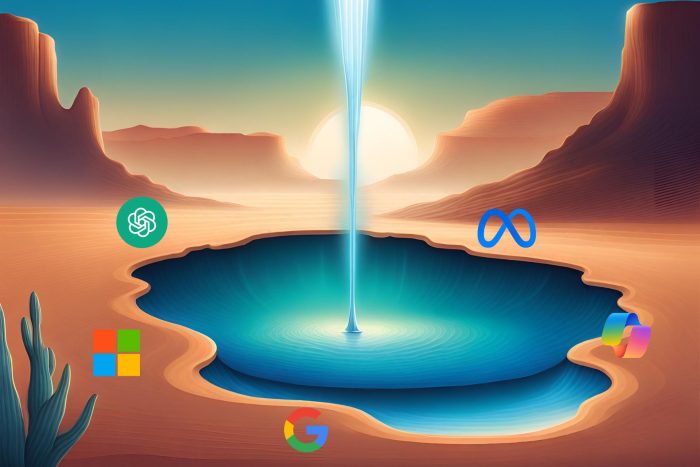Microsoft AI consumes more water than 670 families a year
Local communities compete with tech giants for drinkable water
2 min. read
Published on
Read our disclosure page to find out how can you help Windows Report sustain the editorial team Read more

Large language models (LLMs) will require more energy than we can generate, and there are other problems. AI consumes large quantities of water daily for the cooling process. After all, according to Jez Gorden, the LLMs from Microsoft and OpenAI use a water bottle to cool down after each query. Also, models like ChatGPT have over 10 million queries daily.
Small towns like Phoenix, Arizona, cannot handle AI’s demands without help. After all, the AI generates a lot of wastewater. Microsoft’s Goodyear facility will use 56 million gallons of drinking water, which is enough for 670 families yearly.
How much water does AI consume?
AI consumes a lot of water, and the amount is hard to quantify. It uses it in two ways: directly for on-site server cooling and indirectly to cool power plants. The technology is still in its early phase, and every advancement requires more resources. Unfortunately, this could lead to dire consequences for the environment. Additionally, according to Shaolei Ren, water scarcity is already one of the most important global challenges.
Local communities are at risk, mainly when data centers use their systems to deal with water waste. In addition, cities like Phoenix, Arizona, are already fighting droughts. Some regions even need to share their drinking water with tech giants, which leads to conflicts. In West Des Moines, Iowa, an AI data center cluster consumed 6% of the district’s water in a month in 2022.
By 2030, tech giants like Microsoft, Google, and Meta plan to replenish more water than they use. On top of that, Microsoft wants to build a few more data centers in Phoenix, and this time, they plan on using air cooling systems. This solution will decrease AI water consumption. However, it will increase the amount used by power plants.
Ultimately, AI consumes more water than companies can replenish. This issue creates tensions between communities and tech giants, and it could lead to significantly higher prices and other water system-related problems.
What are your thoughts? Did you think of any ways to reduce AI water consumption? Let us know in the comments.








